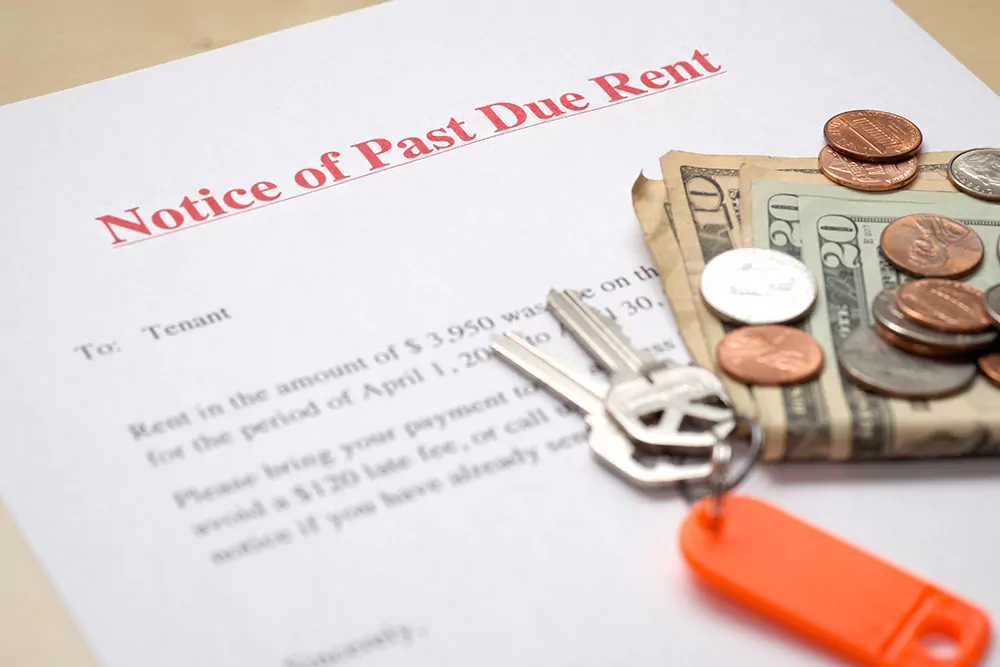How would you sustain your rental property business in unforeseen circumstances if the property is no longer habitable for tenants? While your standard property insurance might cover repair costs, it usually doesn’t account for the lost rental income during the repair period. This is where rent loss insurance steps in.
This blog post will discuss types of rent loss insurance, its coverage, cost, and everything associated.
What Is Rental Loss Insurance?
Rental loss insurance, also known as “Loss of Rent Insurance,” is a policy that safeguards landlords from losing rental income when their property is temporarily uninhabitable due to insured perils like fire, wind, flood, or other significant damages.
Sometimes, landlord insurance automatically comes with a loss of rent coverage, meaning it’s included in standard policies. But other times, you might have to add it to your policy as a premium option.
Other than natural disasters, this clause also applies to sudden vacancies caused by military deployment or an unfortunate death.
Rental loss insurance, or “Loss of Rents,” is triggered when a covered peril forces the tenants to leave the property; it won’t apply if the loss isn’t insured. This insurance generally doesn’t cover future potential income loss.
For instance, if your property becomes uninhabitable and needs six months of repairs, it may cover the lost rent.
However, failure to advertise the property to tenants post-repair might nullify further reimbursements, although canceled bookings during the repair phase might be compensable.
Rental Loss Insurance vs. Skip Rent Provision
Make sure you don’t confuse loss of rent insurance with the “Skip Rent” feature present in the Tenant Protector Plan.
The Skip Rent provision aids landlords by potentially reimbursing one month’s rent, up to $1,000, if a tenant leaves unexpectedly in the middle of their lease or gets legally evicted.
Aligning with Lease Terms
Typically, rental loss insurance coverage matches the current lease agreement term. If a property needs six months of repairs, but the tenant’s lease ends in three months, the policy may cover only those three months of lost rent.
However, if there’s evidence that the tenant planned to renew their lease, the insurance might cover the entire six-month repair period.
What Are the Different Types of Rent Loss Insurance For Landlords?
Essentially, two primary types of insurance safeguard landlords against lost rent. Let’s break them down:
Landlord Insurance
Landlord insurance kicks in when your rental property incurs fire, theft, or flood damages. This policy usually offers rental income protection, meaning you won’t miss out on rental income if your property becomes uninhabitable. This is available as a separate loss of rent insurance with some providers.
It’s essential to know that landlord policy insurance doesn’t cover unpaid rent or intentional damage by tenants, including theft, without signs of forced entry.
Depending on your insurance plan, landlord insurance will offer liability coverage, including medical costs.
It differs distinctly from homeowners insurance, which doesn’t cover rental activities and their associated risks. Landowner insurance is the way to protect yourself from financial setbacks due to property damages or liabilities.
If you’re renting out a room in your home where you also reside or only offering your place for rent occasionally, a homeowners policy might suffice.
Rent Guarantee Insurance
Rent guarantee insurance, known as ‘rent default’ or ‘rental income loss insurance,’ is your safety net when tenants fail to pay rent due to unforeseen personal issues like job loss or other financial difficulties. This insurance covers the monthly rent payments for a specified period if the tenant stops payments.
Before offering coverage, the insurance company evaluates the risk associated with each tenant, considering factors like employment stability and rental history. It is a valuable tool to mitigate potential losses from tenant-caused damages, unpaid rent, or abrupt lease breaks, even assisting with legal fees during evictions.
However, remember, it doesn’t cover unpaid rent if the landlord doesn’t adhere to the rental agreement or maintain a habitable property condition.
What Does a Loss of Rent Insurance Coverage Include?
Here, we break down the aspects that are generally covered and not covered under a standard Loss of Rent Insurance policy:
| Aspect | Covered | Not Covered |
|---|---|---|
| Incident Type | Damages due to covered incidents like flood (if flood damage is a part of the policy) | Damages from incidents not specified in the insurance policy |
| State of the Property | Loss of rent for an occupied unit damaged by incidents like a tree falling | Loss of rent for a vacant unit at the time of the incident, voluntary major repairs or remodeling |
Ask your tenants to secure a renters insurance policy to safeguard their personal belongings in case of a covered loss at the rental property.
What Is the Cost of Loss of Rent Insurance?
Rent loss insurance costs vary depending on your insurance provider, property condition, and replacement costs. However, to give you a ballpark, a study from 2018 indicated that this insurance’s premium usually falls between one-third to one-half of the total cost of a landlord insurance policy, which is, on average, about $2,100 per year.
But how can you nail down the best rate for your circumstances? It pays to do your homework. Before you commit to a policy, make sure to shop around.
Contact various insurance carriers to explore and compare what’s available out there. This way, you can gather various quotes and get a sense of the potential range of costs.
How to Make a Rent Loss Insurance Claim?
If a fire, storm, or other incident damages your property, contact your insurance company quickly. Mention that you’re losing rental income because of this damage, along with reporting the property damage itself.
Your insurance agent will need to know:
- How much rent you’re missing out on
- Any additional costs because of the incident
Make sure to gather all the required details to share with them.
Tip: You can get some tax benefits from this situation. According to the IRS, you can report your rental income losses on Schedule E when you file your taxes.
Now, there are times when this insurance can’t help you. For example, if your personal property gets damaged due to floods, earthquakes, or a virus outbreak preventing you from collecting rent, your policy might not work for the lost rent and dwelling coverage.
Also, if your property is empty just because you have not found a tenant or if your current tenant stops paying rent for reasons not covered by your policy, you can’t claim this insurance.
Keeping an Eye on Deductibles
Monitoring the deductible when filing a claim with your rent loss insurance is important. The deductible is the amount you’re responsible for paying before your insurance kicks in.
Here’s a simpler explanation with numbers: Suppose your property rents for $3000 monthly or about $100 daily. A storm causes water damage requiring 20 days for repairs, translating to a $2,000 loss in rent.
But your deductible is $2500, higher than your loss, meaning you won’t receive any compensation.
If the loss equaled a full month’s rent ($3000), you could claim it. But, you’d only receive $500 after considering the deductible, which might increase your future premiums or lead to policy non-renewal.
Find Affordable Loss of Rent Insurance With Baselane
The rental property business always comes with its risks and uncertainties. An ideal rental property insurance should cover liability protection, such as medical expenses in case of personal injury.
Baselane provides an affordable Loss of Rent insurance policy to safeguard your investment.
Here’s how Baselane makes it easier for property owners like you:
- Affordable Rates: You might be surprised you can save hundreds on your existing properties with us.
- The Right Type of Coverage: We design insurance plans to protect you with additional coverage against most unforeseen circumstances.
- Simple and Transparent: You can swiftly receive a rental property insurance quote online in under a minute without obligation.
- We Make It Easy to Switch: On average, landlords who switch to Baselane save about 25% on their policies.
Act now! Discover the Baselane difference and start enjoying financial protection and superior coverage today! Get a Quote today!







